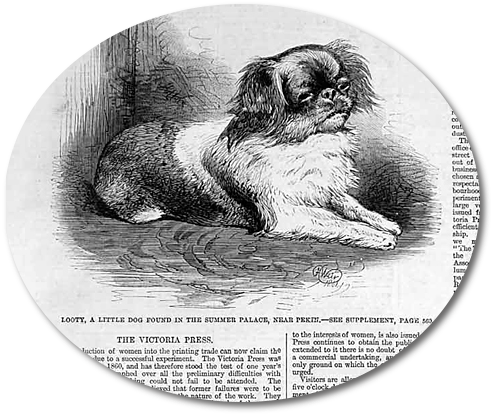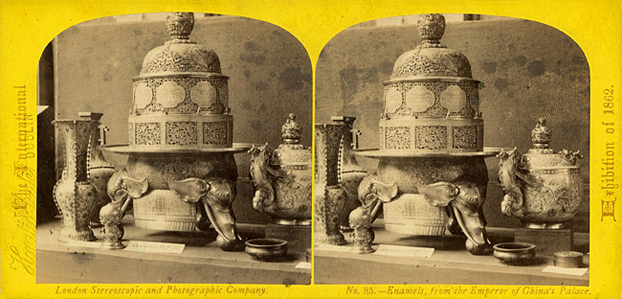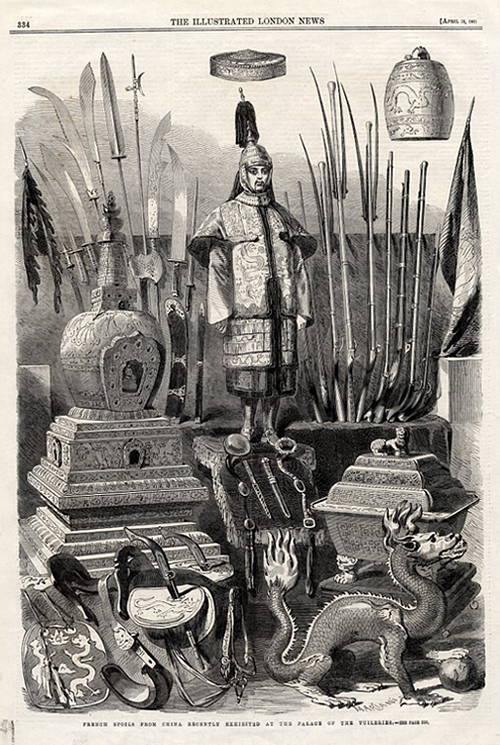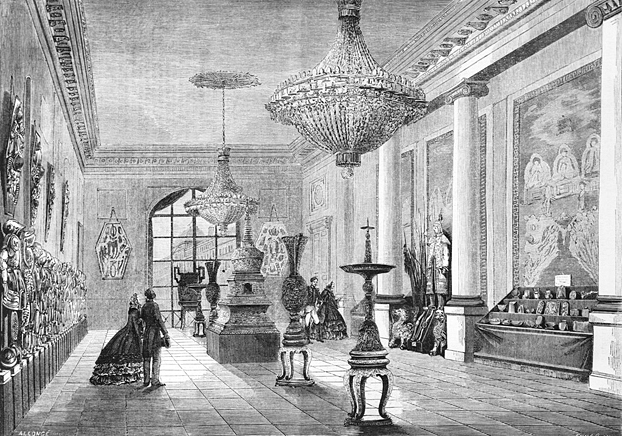|
|
||
|
|
||
|
|
|
|



COLLECTING LOOT
The quantity of treasures stolen from the Yuanmingyuan that reached
European museums and private collections was staggering. James Hevia has argued
that the public seizure, flaunting, display, and later sales of the crowns,
jewels, silks, furs, and other personal artifacts belonging to the emperor and
his family was in the first instance a sign of the triumph of European
imperialism over the Chinese empire. During the looting, some of the more
conspicuous items were plundered explicitly in the name of Queen Victoria
or Emperor Napoleon III. A Pekinese dog taken from the
emperor’s palace was named “Looty” by the British officers, and later presented personally to Queen Victoria. [7]
“Looty, A Little Dog Found in the Summer Palace, near Pekin.”
This picture and story appeared in the Illustrated London News, June 15, 1861. The origin of the Pekinese breed in Europe is often attributed
to “Looty,” who was presented to Queen Victoria by the British forces who sacked the
Yuanmingyuan (widely known at the time as the “Summer Palace”).
[1861_June15_Looty]
“Enamels, from the Emperor of China’s Palace” is the caption of an 1862 stereograph published by the London Stereoscopic and
Photography Company.
[1862_MSC-28b] Terry Bennett Collection
After the sack of the Yuanmingyuan, French officers presented a large cache
of treasures to Napoleon III and his empress Eugénie. Initially displayed at the Tuileries Palace, they were moved to
Fontainebleau Castle near Paris in 1863. Some 400 treasures from the Yuanmingyuan—many dating from the Qianlong period (1736 to 1795) including jades, cloisonné, lacquer, textiles, and objects in gold as well as bronze—filled a suite of three rooms at Fontainebleau called the Musée Chinois (Chinese Museum), where they remain to the present day.
|
“French Spoils from China Recently Exhibited at the Palace of the Tuileries”
Illustrated London News,
April 13, 1861
[1861_ILN_Apr13] |
“Exposition des curiosités Chinoises offertes à l'empereur par l'armée expéditionnaire” (Exhibition of the Chinese curiosities given to the Emperor by the
expeditionary army), an illustration published in Le Monde Illustré, 1861
[1861_ExChCurio_brd]









